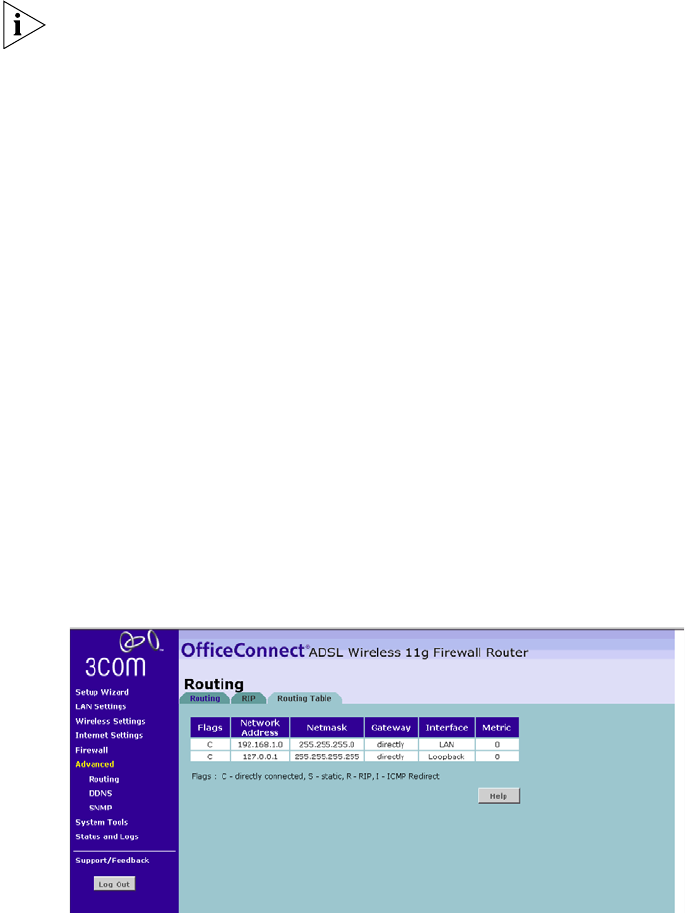
72 CHAPTER 5: CONFIGURING THE ROUTER
3Com recommends that you only use RIPv1 if there is an existing
RIP-enabled device on your network that does not support RIPv2. In all
other cases, you should use RIPv2.
5 Use the Poison Reverse drop-down list to enable or disable Poison Reverse
on the router. Enabling Poison Reverse on your Router allows it to
indicate to other RIP-enabled devices that they have both routes that
point to each other, preventing data loops.
6 Use the Authentication Required field to choose one of three modes of
authentication:
■ None — Switches off authentication on the specified interface.
■ Password — An unencrypted text password that needs to be set on all
RIP-enabled devices connected to this router. RIP information is not
shared between devices whose passwords do not match.
7 In the Authentication Code field, enter the password that is required if
the Password option has been selected.
8 Click Apply.
Routing Table
The Routing Table screen displays details for the default routing used by
your Router and any routing created using Static Routing or RIP.
Figure 60 Routing Table Screen
